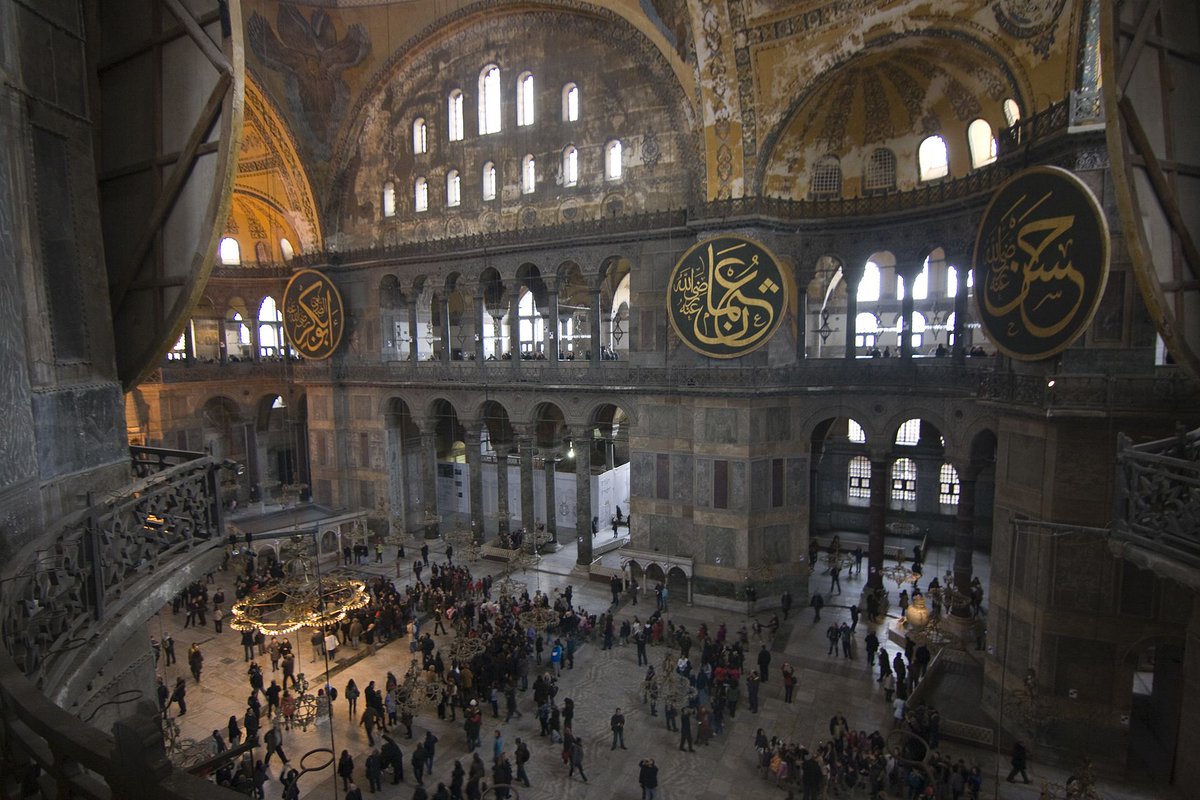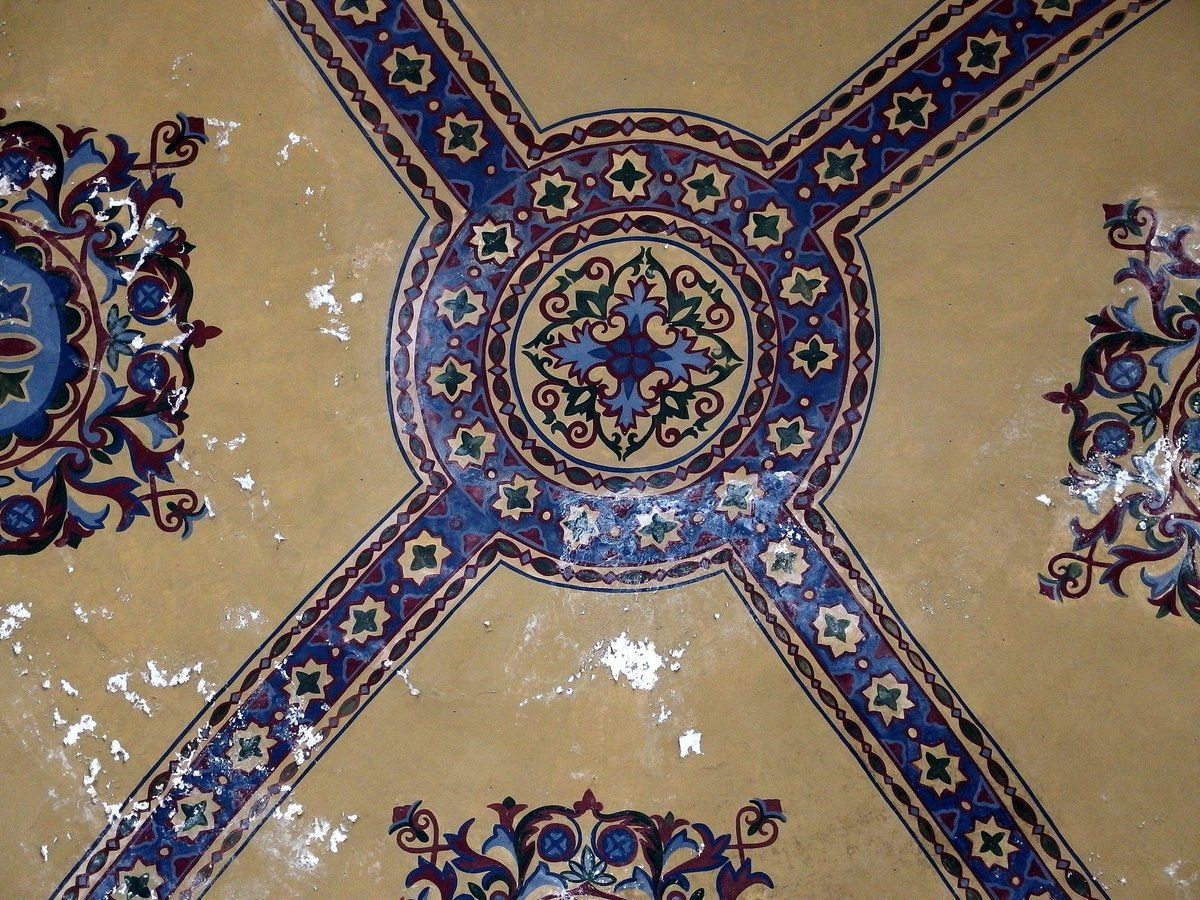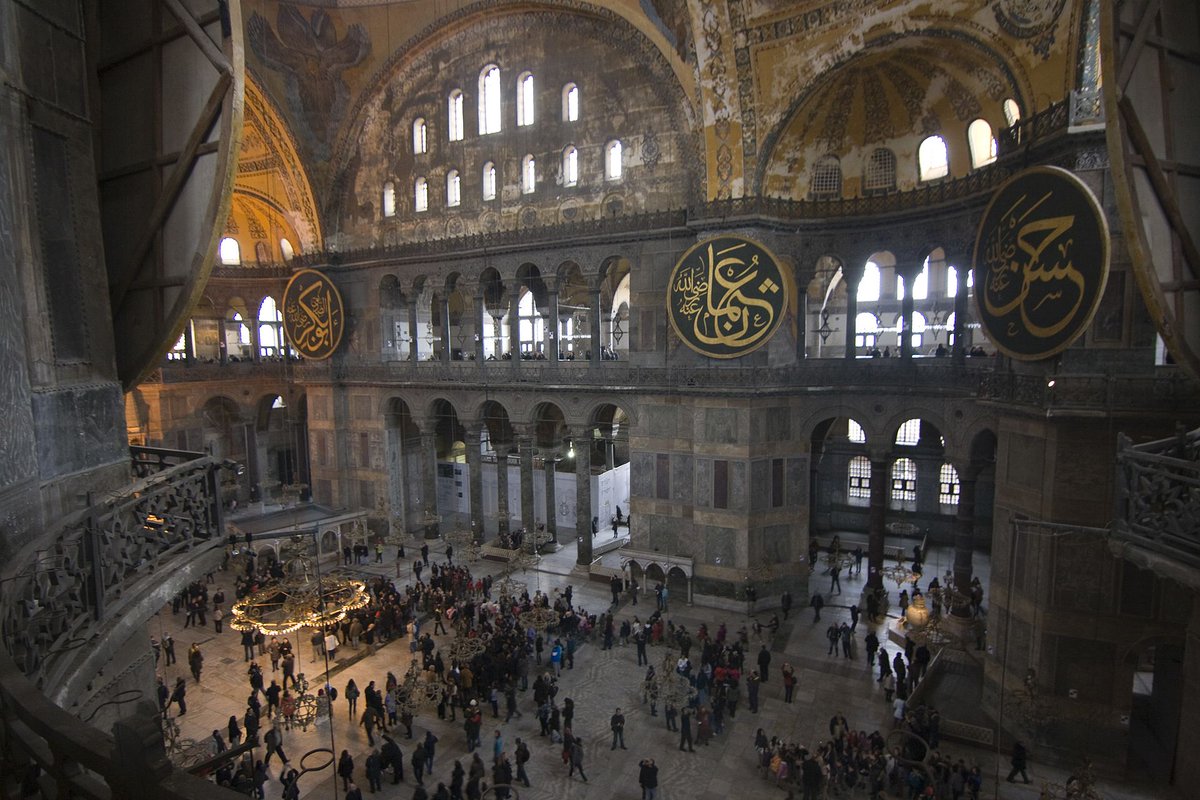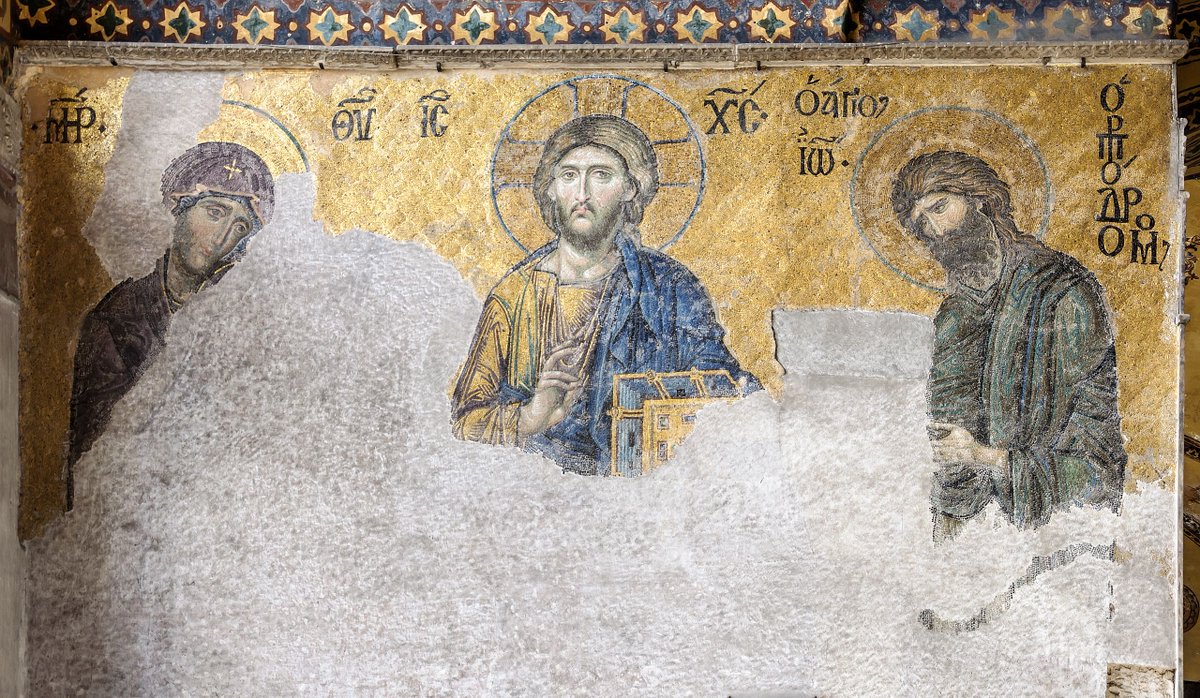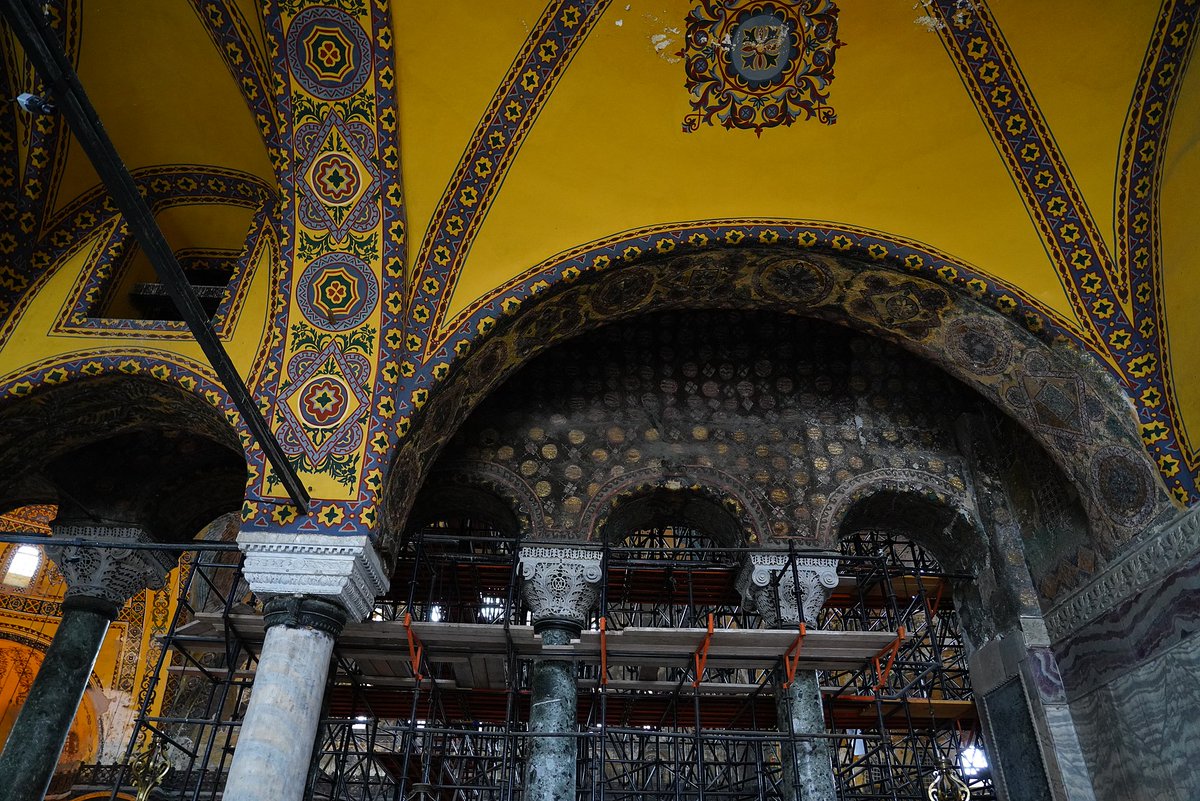On this day, in 527 CE, the Hagia Sophia was consecrated as a site of worship. One thousand, four hundred and eighty three years later, it is still a site of worship. The religion it is dedicated to has changed, but the spirit has not. 

The current structure is actually the third consecrated structure on the site. It was commissioned by Justinian I to replace the previous basilica, destroyed by an earthquake, which was itself a replacement of the first church, destroyed by fire.
I told you that mainly to stress how *wild* it is that the current structure has survived 1.5k years, after the previous two did not last a century each.
She's a masterpiece of Byzantine architecture. The dome is one of the oldest and oldest extant pendentive domes. When it was built, became the largest enclosed open space in the world- and remained so for nearly a millennium.
(a pen. dome is a circle on a square, essentially)
(a pen. dome is a circle on a square, essentially)
Justinian consecrated the Hagia Sophia as the cathedral seat of Constantinople, and therefore as the seat of the Eastern Orthodox Church.
She was decorated accordingly.
She was decorated accordingly.
But you'll notice I'm not posting many photos of early Christian Byzantine art. There's a really simple reason for that.
She was redecorated in the 15th-17th centuries.
She was redecorated in the 15th-17th centuries.
Around the middle of the 15th century, the Hagia Sophia was converted into a Mosque.
This actually wasn't the first religious swapsie for the structure. For most of the 13th century, she served as a Roman Catholic Church, before eventually being reclaimed by the Eastern Orthodox church.
However, Islam has different guidelines for religious art, and does not practice veneration of iconography as the Christian church does*. So, the mosaics of saints needed to be covered.
*this is a generalisation and there are nuances in both religious practices
*this is a generalisation and there are nuances in both religious practices
Plasterwork was painted over. Mosaics were painted or tiled or plastered over. And every inch was decorated with spectacular, stunning, intricately layered Islamic religious art.
In the 1930's, the secular Turkish government closed the site as a mosque, and reopened the Hagia Sophia as a Museum.
And here, we arrive at our problem.
She dearly needs restoration.
And here, we arrive at our problem.
She dearly needs restoration.
The paint is chipped. The plaster is crumbling. Tiles are cracked. Windows are broken.
Restoration, by definition, is returning something to its previous state.
So. Which previous state should we choose?
Restoration, by definition, is returning something to its previous state.
So. Which previous state should we choose?
Take a good look at this Islamic geometric painting. It needs restoring. But peer closely, and you can see, underneath, the painting of an Orthodox cross leaching through.
Restoring either piece of art to its former glory would destroy the other.
Restoring either piece of art to its former glory would destroy the other.
each represents the pinnacle, the height of worship for a society.
to save one, we ruin the other.
how do we choose?
how can anyone choose?
to save one, we ruin the other.
how do we choose?
how can anyone choose?
Quite fairly, the Turkish government spent a good 90 years avoiding this conundrum by doing basically the bare minimum in preventative conservation. Kicking the can forward, as it were.
As of 2020, the Hagia Sophia has been reconsecrated as a Mosque. During prayers, the Christian icons are covered with drapes. Otherwise, she is open to the public, as many culturally significant religious sites are.
But the debate continues.
But the debate continues.
When the conversion back into a Mosque was announced, the Christian church generally lost its cool. Not naming names, but *somebody* declared it "an attack on Christian civilisation".
Spoiler: it isn't.
The Hagia Sophia is a building.
Spoiler: it isn't.
The Hagia Sophia is a building.
A building that has been considered sacred, by many millions of people, over many hundreds of years.
A building that has represented different faiths and different practices.
A building that has seen those faiths and practices fluctuate and change and mutate.
A building that has represented different faiths and different practices.
A building that has seen those faiths and practices fluctuate and change and mutate.
Christianity today is not what it was when the Hagia Sophia was built.
Islam today is not what it was in 1453.
Humanity is pretty much exactly the same, but that's another thread.
How can we restore anything to a state that no longer exists?
Islam today is not what it was in 1453.
Humanity is pretty much exactly the same, but that's another thread.
How can we restore anything to a state that no longer exists?
We cannot make the Hagia Sophia what she used to be at *any* point in her history. History cannot be recreated, not really.
We can replace, but we cannot truly restore.
We can replace, but we cannot truly restore.
But we shouldn't look at replacing as an attack, or as the end.
We've been replacing things for millennia.
We've been replacing things for millennia.
This is the third Hagia Sophia, remember?
And this is the (checks notes) sixth time that the current structure has changed purpose.
And somehow, Christianity still exists. Islam still exists.
The Hagia Sophia still exists.
And this is the (checks notes) sixth time that the current structure has changed purpose.
And somehow, Christianity still exists. Islam still exists.
The Hagia Sophia still exists.

 Read on Twitter
Read on Twitter





